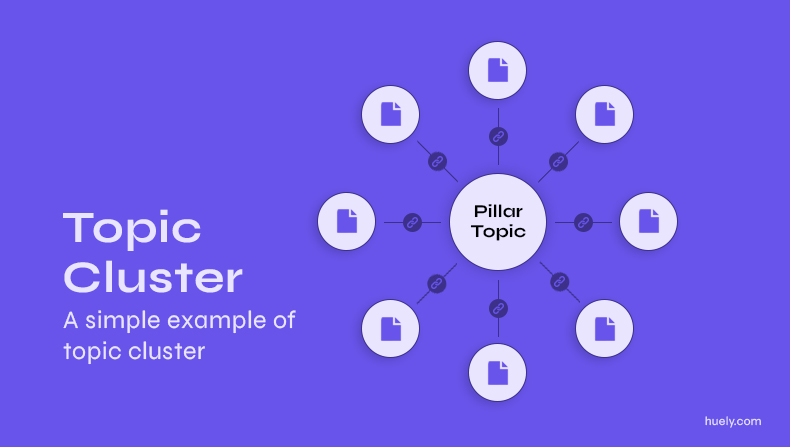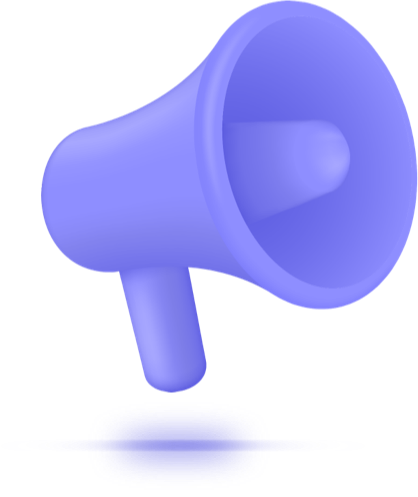Have you ever wondered why some content performs better than others? It’s about more than just the quality of the writing or the visuals. In fact, it all starts with having a solid content strategy in place.
In the current digital era, where content is considered king, having a solid content strategy is indispensable for accomplishing your business objectives and keeping your audience engaged. A content strategy acts as a roadmap that directs the creation, delivery, and management of your content.
In this article, we explore the important steps for developing a content strategy that delivers actual results. So, let’s dive into content strategy and learn how to create content that really connects with your target audience.
What is content strategy?
Content strategy is a comprehensive approach covering everything from planning and creation to publication, management, and content governance.
Developing a strategic framework that aligns with an organization’s goals and objectives is the key to a successful content strategy. This ensures that the right content is created and delivered to the right audience at the right time.
A well-crafted content strategy involves various elements, such as conducting audience research and analysis, defining goals and key performance indicators, identifying content gaps and opportunities, creating a content calendar, determining content distribution channels, and establishing guidelines for content creation, publication, and management.
This strategic approach enables you to efficiently convey your brand message and connect with your intended audience. Plus, it ensures content consistency, quality, and relevance across various platforms and channels.
Ultimately, implementing a content strategy allows you to maximize the impact and value of your content, drive user engagement, and achieve your business objectives.
Content Strategy vs. Content Marketing: Understanding the Difference
Within the digital marketing realm, the terms content strategy and content marketing are frequently used. While they’re related, they have distinct roles in the process of creating and sharing content. Understanding the difference between the two is essential to making the most of content in achieving business goals. Let’s analyze these two categories:
Content Strategy: The Master Plan
Think of content strategy as the big picture. It’s the master plan that guides the creation, delivery, and governance of usable and useful content. It’s not just about deciding what content to produce but also why it’s being produced. Content strategy is about understanding the audience, their needs, and how content can meet those needs. This involves:
What does the organization want to achieve with its content?
Who is the content for, and what are their preferences, behaviors, and pain points?
Assessing existing content and planning for future content needs.
Establishing standards for the quality, tone, style, and ethical considerations of the content.
Setting metrics to evaluate content performance and strategies for improvement.
Content Marketing: The Execution
Content marketing, on the other hand, is the tactical execution of the strategy. It’s about creating and distributing content to attract, engage, and retain an audience. This involves:
Writing articles, blogs, social media posts, videos, and other forms of content.
Sharing content across various platforms and channels to reach the audience.
Using content to engage users, generate leads, and drive conversions.
Monitoring how content performs against marketing goals.
By understanding the difference between content marketing and content strategy, you can develop a holistic approach to content creation and distribution, ensuring that content is compelling and aligned with your goals and objectives.
11 steps to a successful content strategy
Creating a content strategy that effectively drives your goals can be complex. However, breaking it down into smaller more obtainable steps can make it more achievable and practical. Here are 11 essential steps to develop a successful content strategy:
1. Set clear goals
Define specific, measurable objectives for your content. This could include increasing website traffic by a certain percentage, boosting engagement on social media, generating a particular number of leads, or elevating brand awareness. These SMART goals should align with your broader business objectives and be measurable to track progress.
S.M.A.R.T GOALS ACRONYM:
Specific
Measurable
Achievable
Relevant
Time-bound
2. Identify your target audience
Conduct research to understand who your content is aimed at. This involves gathering data on the age, gender, location, interests, and online behavior of your potential consumers. Understanding your target audience helps tailor your content to their interests and needs.
3. Create detailed audience personas
Building on your audience research, develop detailed personas that represent segments of your audience. These personas should include demographic details, lifestyle preferences, challenges, and goals. They serve as a guide to creating content that resonates on a personal level with your audience.
4. Audit your existing content
Evaluate your current content to understand its effectiveness. Look at metrics like page views, engagement rates, and conversion rates. Identify which pieces perform well and why, and spot content gaps and areas for improvement. This helps in refining your future content strategy.
5. Conduct keyword research
Utilize tools such as Google Keyword Planner or SEMrush to recognize the keywords and phrases that your audience is searching for. This analysis will help you determine the topics that you should focus on and optimize your content for search engines, making it more visible.
6. Select an appropriate content management system (CMS)
Choose a Content Management System (CMS) that matches your requirements, taking into account aspects such as user-friendliness, customization capabilities, SEO features, and scalability. A suitable CMS will streamline the content creation and management process, making maintaining a consistent content output easier.
7. Organize a content creation schedule
Create a content schedule that specifies which content will be released and when. This schedule should balance various types of content (blogs, videos, infographics) and consider optimal publishing times to maximize reach and engagement.
8. Plan strategies for content distribution and outreach
Determine the most efficient channels for distributing your content: social media, email newsletters, or third-party platforms. Also, plan for outreach activities like influencer collaborations or guest posting to extend your content’s reach.
9. Brainstorm content ideas
Regularly schedule brainstorming sessions with your team to generate fresh and creative content ideas. Look at industry trends, audience feedback, and competitor strategies for inspiration. Keeping your content innovative and relevant is key to engaging your audience.
10. Develop a content governance framework
Establish guidelines and standards for your content’s creation, publication, and management. This includes defining the tone of voice, style guides, and quality standards and setting up approval processes and roles for team members involved in content creation.
11. Implement your strategy using the designed framework
With all the planning in place, it’s time to implement your strategy. Monitor the performance of your content against your goals and be flexible to adjust your plan based on what works best. Continuous improvement based on data and feedback is essential for a successful content strategy.
Additional content strategy considerations
In the behavioral health industry, E-E-A-T is paramount. Mental health and well-being content must be authored or reviewed by licensed professionals, backed by reputable sources, and adhere to ethical guidelines. For example, if you’re running a mental health blog, your content should be written or reviewed by qualified therapists or psychologists, supported by scientific research, and promote ethical and evidence-based practices. Demonstrating E-E-A-T improves your content’s credibility and instills confidence in individuals seeking mental health information.
Given the sensitive nature of behavioral health topics, YMYL guidelines are crucial. Content that can impact a person’s mental and emotional well-being must meet the highest standards of accuracy, trustworthiness, and expertise. For instance, if your website offers advice on coping with depression or anxiety, it should be authored or reviewed by mental health professionals, provide accurate information, and include disclaimers about seeking professional help. Maintaining trust is paramount in the behavioral health field.
SEO strategies are essential in ensuring that individuals in need can find valuable resources. Content must be optimized for keywords and structured in a way that enhances its search engine visibility. For example, if you operate a mental health support website, conduct keyword research to target low-difficulty phrases like “treatment goals for anxiety” to improve organic search traffic and reach individuals seeking guidance.
Understanding why people are searching for behavioral health information is critical. People may seek information for various purposes, such as informational (learning about mental health conditions), transactional (finding therapy services), or navigational (locating mental health organizations). Align your content with these intents. If you run a drug rehab website, consider creating content that provides information on addiction, treatment options, and recovery resources for those struggling with substance abuse.
Topic clusters can establish your website as a valuable resource. A pillar content page on a broad topic, such as “Understanding Depression,” can link to cluster content covering specific aspects like “Symptoms of Major Depressive Disorder,” “Treatment Options for Depression,” and “Coping Strategies for Depressive Episodes.” This approach showcases your expertise and improves your website’s search engine ranking.
See diagram below:
Benefits of implementing a solid content strategy
If you’re considering implementing a strong content strategy, here are five benefits you can expect to see:
A well-defined content strategy can help your brand become more visible to your target audience. Creating high-quality and relevant content can enhance your search rankings, and simplify the process of clients finding you. Over time, consistently producing high-quality content establishes your authority and expertise in your industry, further enhancing your brand’s reputation.
When your content resonates with your audience, it leads to higher engagement. By addressing your target audience’s needs, questions, and interests, you can encourage them to interact with your brand. This engagement can include backlinks, likes, shares, comments, and subscriptions, all of which contribute to a more loyal and active community around your content.
A strong content strategy can drive leads and conversions by providing valuable resources and guiding potential customers through the buyer’s journey. This can result in increased admissions and revenue for businesses.
A good content strategy is about more than just what you create and how you organize and deliver it. A well-structured content strategy ensures your audience can easily access and navigate your content. This leads to a better user experience, reducing bounce rates and increasing visitors’ time on your website or platform.
By implementing a content strategy, you can track and analyze content performance. Using a data-driven approach, you can understand what works and what doesn’t by analyzing metrics like page views, click-through rates, and conversion rates. This allows you to make informed decisions about future content creation and distribution. This continuous improvement cycle leads to more compelling content over time.
Need help developing a content strategy?
A content strategy can help you generate leads, increase conversions, and grow revenue. However, optimizing the user experience is equally important to guarantee that your audience can easily access and navigate your content. With a data-driven approach, you can continuously refine your strategy for even more compelling content in the future.
Are you ready to unlock the full potential of your content? Let’s work together to develop a content strategy that not only works but excels. Contact us today to get started on this journey.





